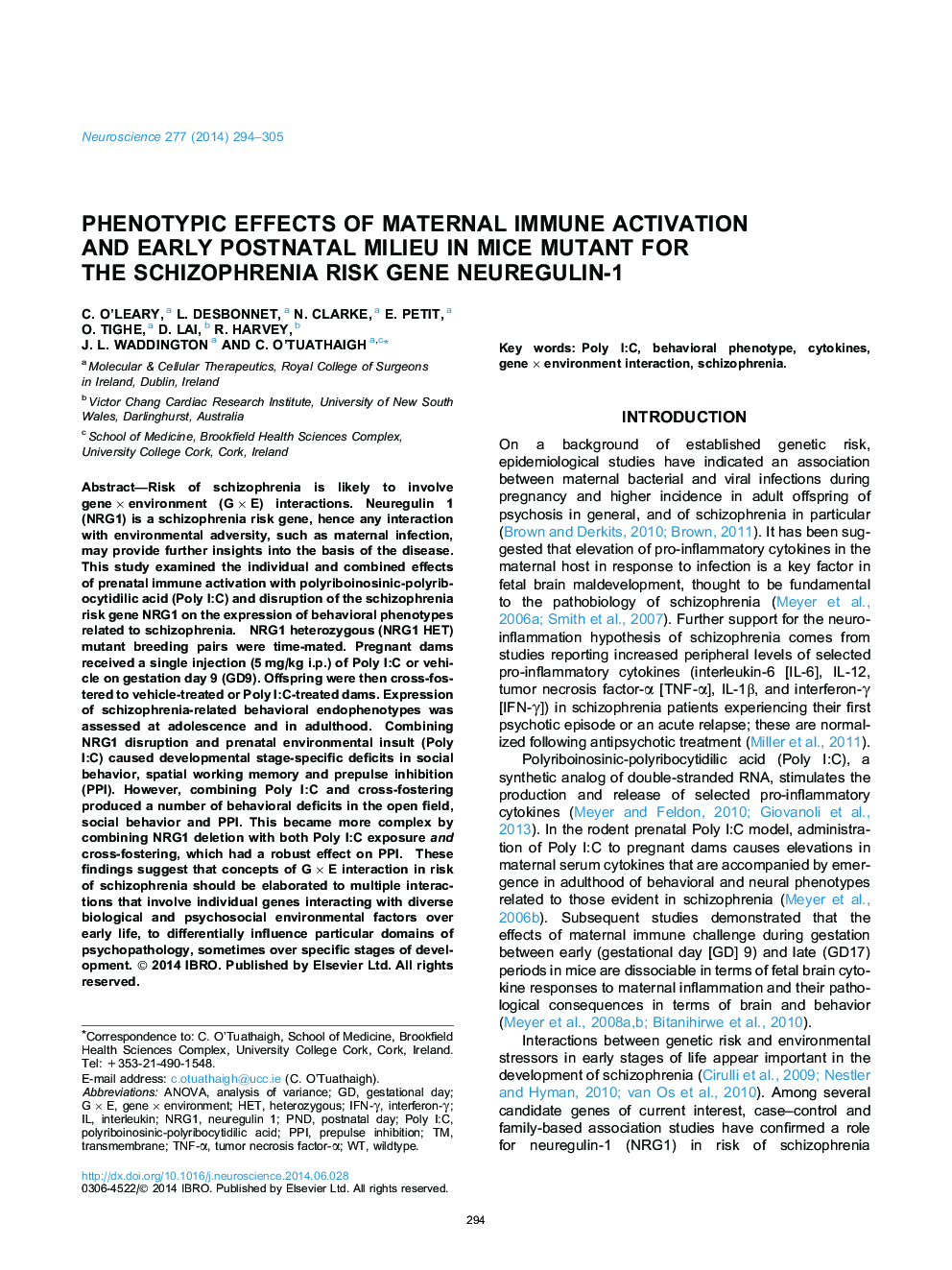| Article ID | Journal | Published Year | Pages | File Type |
|---|---|---|---|---|
| 6273604 | Neuroscience | 2014 | 12 Pages |
â¢Risk of schizophrenia involves gene Ã environment (G Ã E) interactions.â¢We examined the interaction between the risk gene neuregulin-1 and maternal infection.â¢Neuregulin-1 KO and prenatal stress interact to produce schizophrenia-related phenotypes.â¢Some of the observed G Ã E effects were observed over specific stages of development.
Risk of schizophrenia is likely to involve gene Ã environment (G Ã E) interactions. Neuregulin 1 (NRG1) is a schizophrenia risk gene, hence any interaction with environmental adversity, such as maternal infection, may provide further insights into the basis of the disease. This study examined the individual and combined effects of prenatal immune activation with polyriboinosinic-polyribocytidilic acid (Poly I:C) and disruption of the schizophrenia risk gene NRG1 on the expression of behavioral phenotypes related to schizophrenia.NRG1 heterozygous (NRG1 HET) mutant breeding pairs were time-mated. Pregnant dams received a single injection (5 mg/kg i.p.) of Poly I:C or vehicle on gestation day 9 (GD9). Offspring were then cross-fostered to vehicle-treated or Poly I:C-treated dams. Expression of schizophrenia-related behavioral endophenotypes was assessed at adolescence and in adulthood.Combining NRG1 disruption and prenatal environmental insult (Poly I:C) caused developmental stage-specific deficits in social behavior, spatial working memory and prepulse inhibition (PPI). However, combining Poly I:C and cross-fostering produced a number of behavioral deficits in the open field, social behavior and PPI. This became more complex by combining NRG1 deletion with both Poly I:C exposure and cross-fostering, which had a robust effect on PPI.These findings suggest that concepts of G Ã E interaction in risk of schizophrenia should be elaborated to multiple interactions that involve individual genes interacting with diverse biological and psychosocial environmental factors over early life, to differentially influence particular domains of psychopathology, sometimes over specific stages of development.
